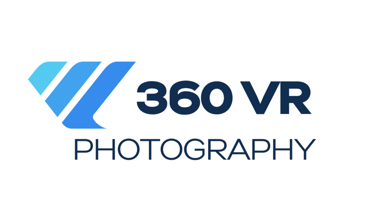Insta360 Pro 2 vs Insta360 Titan – Which 360° VR Camera Is Best for Professional Filmmaking?
Compare Insta360 Pro 2 vs Insta360 Titan — discover key differences in image quality, resolution, stabilization, HDR, workflow, and cinematic performance. Find out which camera suits your professional 360° VR production needs.
VIRTUAL TOUR



Insta360 Pro 2 vs. Insta360 Titan – The Ultimate 360 Camera Showdown: When Quality Means Everything
The Insta360 Pro 2 was a revolution. It redefined professional VR filmmaking with fantastic 8K 3D capture, rock-solid stabilization, and real-time transmission—it is the workhorse that pays the bills.
But then, the game changed again. The Insta360 Titan arrived, not as a replacement, but as an entirely new class of camera. It is a true cinematic powerhouse designed for high-end films, immersive storytelling, and those projects where you just cannot compromise on image quality.
So, which one belongs in your gear bag? Here is the straight-up comparison to help you choose your VR weapon.
The Two Approaches: Mobility vs. Mastery
1. Design and Build Quality (The Feel)
Insta360 Pro 2: If you are often scrambling on location, traveling, or need to set up fast, the Pro 2 is your friend. It is lightweight, portable, and relatively simple to manage. The vibe: Pro 2 is the agile documentary camera.
Reference: Insta360 Pro 2 Product Page
Insta360 Titan: Built like a beast. It is larger, heavier, and feels like a dedicated cinema camera. Its solid aluminum body houses eight premium Micro Four Thirds sensors—and that is what separates it from everything else. The vibe: Titan is the studio-grade VR film rig.
Reference: Insta360 Titan Product Page
2. Resolution and Image Quality (The Detail Obsession)
Insta360 Pro 2: Still professional-grade, giving you up to 8K 3D video (a sharp $7680 \times 7680$) and incredible 12K photo composites. This is more than enough for most VR tours, documentaries, and live streams.
Reference: Insta360 Pro 2 Specifications
Insta360 Titan: Where you enter cinematic territory. It delivers a staggering 11K 3D video (a huge $10560 \times 10560$) and massive 12K 2D/3D photos. This is about cinematic clarity and incredible depth that truly shines on high-end headsets.
Reference: Insta360 Titan 11K Resolution Details
3. Sensor Size and Dynamic Range (The Soul of the Image)
Insta360 Pro 2: Uses six smaller $1/2.3\text{-inch}$ sensors. They are great under good light but struggle when things get tricky.
Reference: Insta360 Pro 2 Detailed Specs - Sensor Type/Size (Used a trusted retailer/spec aggregator as direct sensor size is often less prominent on the main product page.)
Insta360 Titan: Features eight Micro Four Thirds sensors, which are physically much larger. This translates directly to a vastly superior dynamic range, incredible performance in low light, and a depth of field that gives VR footage a true cinematic feel.
The Workflow and Performance
4. Stabilization: FlowState Elevated
Both cameras benefit from Insta360's signature FlowState stabilization, which basically gives you gimbal-smooth footage without the hassle of a heavy external rig.
The Titan uses an ultra-precise 9-axis gyro system, providing that extra edge of precision for complex movements.
5. Storage and File Management
Insta360 Pro 2: Works well, using six MicroSD cards, an SD card for proxies, and optional SSD for backup. It is flexible but can involve juggling a lot of cards.
Insta360 Titan: Understands that 11K files are massive. It smartly simplifies things by saving all data directly to removable SSD drives (often via nine SD cards internally, which simplifies post-production access). For large-scale production, the direct SSD workflow is faster and far more reliable.
6. Live Streaming vs. Cinematic Post
Insta360 Pro 2 (Live King): Effortlessly supports 8K 2D and 3D live streaming via various outputs and can stream while recording for later editing.
Reference: Insta360 Pro 2 Live Streaming Feature
Insta360 Titan (Post Powerhouse): Its real focus is cinematic post-production. It offers the ability to record RAW video with 10-bit color, which is non-negotiable for serious color correction and grading in a film pipeline.
7. Audio and Sound Quality (The Immersion Factor)
Both cameras capture ambisonic spatial audio for immersive 3D sound—a must-have for VR.
The Titan improves this further with high-fidelity ambisonic audio and superior external mic support, allowing you to capture studio-level sound that truly matches its pristine visual quality.
Insta360 Pro 2 vs. Titan: Quick Comparison Table
FeatureInsta360 Pro 2 (The Workhorse)Insta360 Titan (The Cinematic Rig)Primary Use CaseVersatile VR Tours, Live Streaming, Commercial ProjectsHigh-End VR Film, IMAX-Level Production, Cinematic StorytellingMax 3D Video Resolution8K ($7680 \times 7680$)11K ($10560 \times 10560$)Sensor Size (Crucial)$6 \times 1/2.3\text{-inch}$ CMOS (Smaller)$8 \times \textbf{Micro Four Thirds}$ (Much Larger)Color Depth8-bit10-bit (Allows for billions of colors/RAW recording)RAW Video SupportNoYes (Essential for film pipelines)Live Streaming8K 2D/3D via Insta360 8K Live Software8K 2D/3D via Insta360 8K Live Software
Final Verdict: Which One Should You Choose?
Choose the Insta360 Pro 2 if... You are a versatile 360 filmmaker or VR production company needing a balance of power and portability. It is your reliable, high-performing workhorse.
Choose the Insta360 Titan if... Your goal is cinematic storytelling, high-end VR films, or IMAX-level production. The Titan is an investment in pure, uncompromised image quality.
Video Reference: Insta360 Pro 2 vs Titan Visual Comparison
YouTube Link for a visual comparison video (Search Result Example) - A relevant YouTube video comparison between the Pro 2 and Titan should be inserted here for visual reference.
Ready to create an immersive experience that leaves your audience speechless? At 360 vr photography, we specialize in professional Virtual Reality, 360 Filming, and Metaverse Experiences. We know exactly which camera to use to deliver the stunning, realistic content your brand deserves.
Visit: www.360vrphotography.in
Call: +91 99203 22366
Email: info@360vrphotography.in


